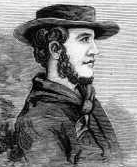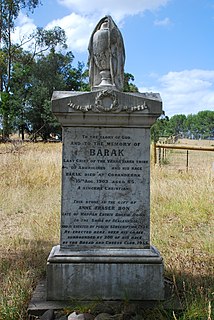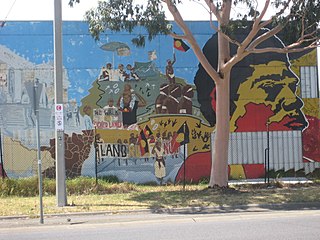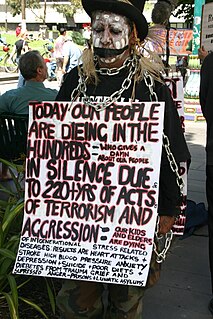
The Wurundjeri Tribe Land and Compensation Cultural Heritage Council was established in 1985 by descendants of the Wurundjeri people who are the traditional custodians of the country around Melbourne. There are three family groups in the council: the Nevins, Terricks and Wandins with 30 elders and about 60 members. [1]

The Wurundjeri are Indigenous descendants of the people of the Indigenous Australian nation of the Wurundjeri language group, in the Kulin alliance. They occupied the Birrarung Valley. Its tributaries are the present location of Melbourne. Before European settlement, they lived predominantly as aquaculturists, swidden agriculturists, and hunters and gatherers. Seasonal changes in the weather, availability of foods and other factors would determine where campsites were located, many near the Birrarung and its tributaries.
Contents
The members of the Council are all descendants of a Woiwurrung / Wurundjeri man named Bebejan, through his daughter Annie Borate (Boorat), and in turn, her son Robert Wandin (Wandoon). Bebejan was a Ngurungaeta of the Wurundjeri people and was present at John Batman’s ‘treaty’ signing in 1835. [2]
Bebejan also known as Bebejern or Jerum Jerum, was a Ngurungaeta of the Wurundjeri people of the Woiwurung language group in the present day Australian state of Victoria. He was at the meeting which purportedly gained signatures to Batman's Treaty in 1835 and signed it along with seven other tribal leaders. The contract itself is historically significant as it was the first and only documented time when Europeans negotiated their presence and occupation of Aboriginal lands directly with the traditional owners. Bebejan was most probably elevated to tribal leadership after the decimation of the second smallpox plague in 1828. The fact that he was elevated over Billibelleri, his wife's uncle, is testament to the Aboriginal leadership system being merit-based, not lineal descent. Billibelleri readily became number two man (Songman) to his younger nephew and succeeded Bebejan as leader in 1836. Bebejan was also the father of William Barak as well as nephew-in-law to Billibellary.
Ngurungaeta is a Woi-Wurrung word often said to mean 'head man' or 'tribal leader', used by clans of the Woi-Wurrung tribes and Taung Wurrung Ngurai-illum Wurrung. Ngurungaeta held the same tribal standing as an Arweet of the Bunurong and Wathaurong people. The current Ngurungaeta is Murrundindi. The term became of particular importance as an identifier of senior men prepared to accept Anglo control in the latter part of the 19th Century. It is unlikely that the term was used to express genuine recognition of senior members of traditional groups in the Melbourne area after the 1840s, following the death of Billibellary ca 1846.

John Batman was an Australian grazier, entrepreneur and explorer. He settled in the north-east of the Van Diemen's Land Colony in the 1820s, and later as a leading member of the Port Phillip Association he led an expedition which explored the Port Phillip Bay area on the Australian mainland with a view to establishing a new settlement there. He is best known for his role in the founding of the settlement on the Yarra River which became the city of Melbourne, eventual capital of the new Colony of Victoria, and one of Australia's largest and most important cities.












